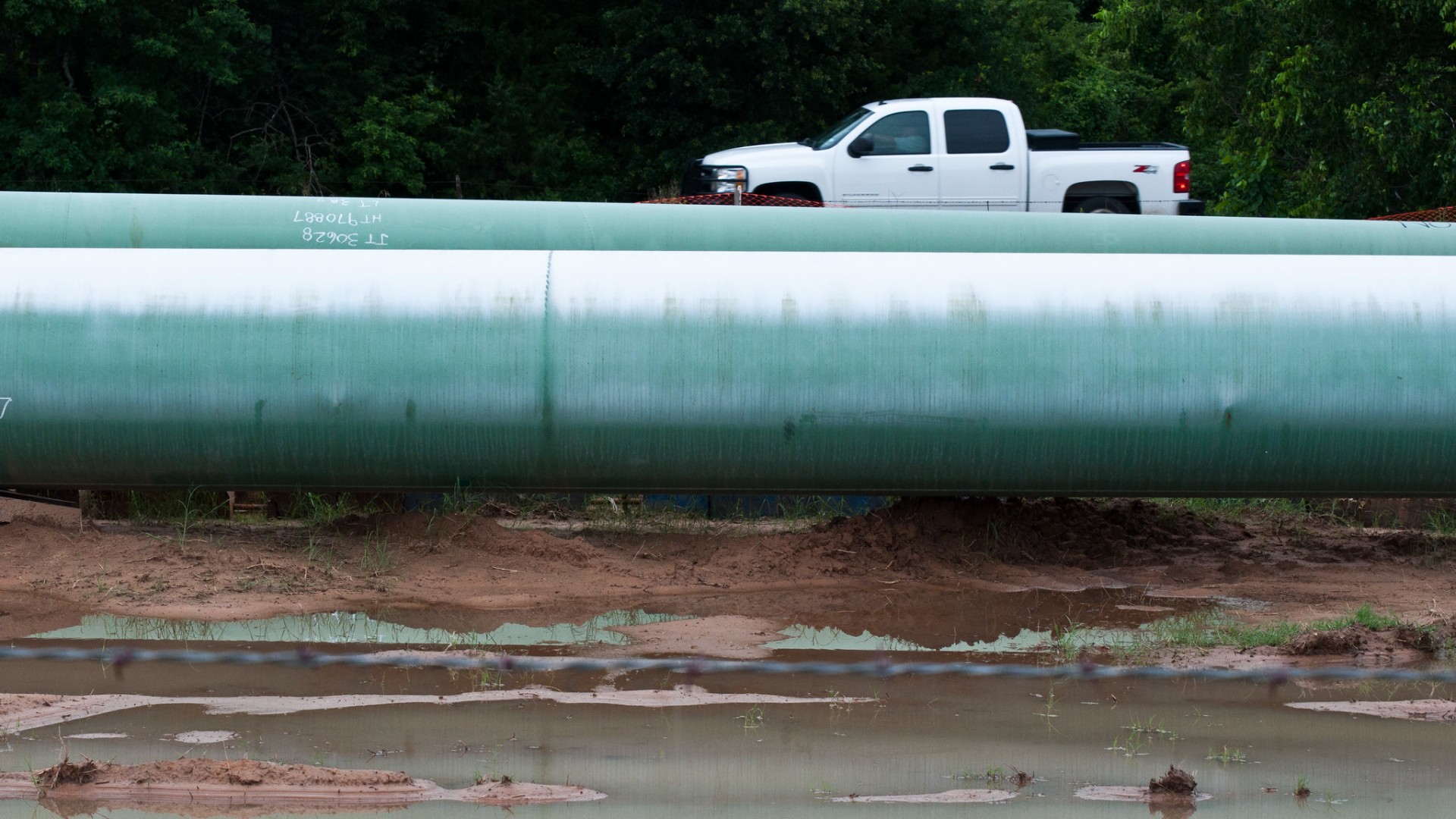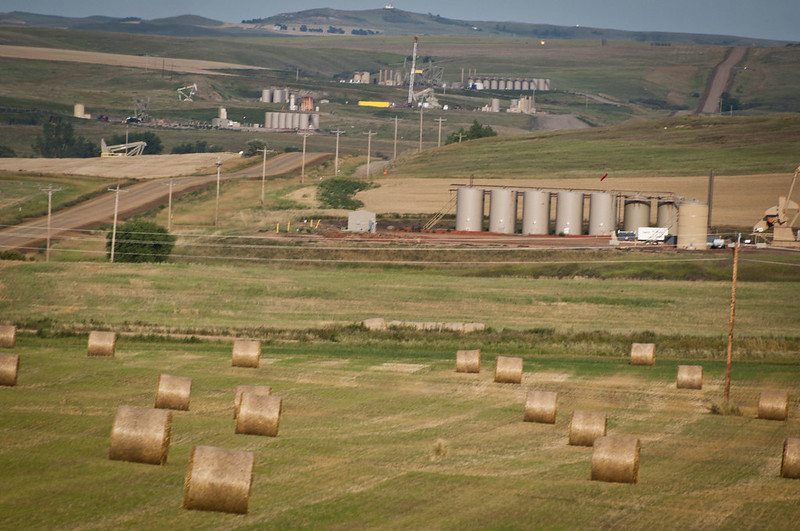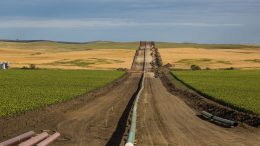When Dominion Energy and Duke Energy unexpectedly cancelled plans to build the Atlantic Coast Pipeline on July 5, environmental advocates throughout the Southeast cheered.
But even a few days later, Mark Sabath, senior attorney at the Southern Environmental Law Center, still seemed a bit shocked by the victory. His organization worked for six years to stop the 600-mile-long pipeline, which would have transported fracked gas through West Virginia, Virginia and North Carolina.
“We were surprised in terms of it happening when it did,” he says of the companies’ decision. “But it was certainly something we were thinking for a long time should happen.”
Of course, should and would are often a world apart. In fact, just a few weeks earlier, the energy companies had won a substantial victory when the Supreme Court ruled that their pipeline could cross the Appalachian Trail.
So when the word came down that Dominion and Duke were throwing in the towel, it caught a lot of people off guard. And it wasn’t unique — the announcement came along with a wave of other bad news for the oil and gas industry, including bankruptcies and more stalled pipeline efforts.
In his weekly column for The New Yorker, Bill McKibben summed it all up: “It’s been a truly awful few days for the fossil-fuel industry, which is another way of saying that it’s been an unexpectedly good few days for planet Earth.”
Indeed, at quick glance, the industry looks like it’s on the ropes, but what does it all mean in the big picture? Here are some takeaways.
Cutting Corners Backfires
In a statement on the cancellation of the Atlantic Coast Pipeline, which had ballooned in cost from an estimated $5 billion to $8 billion, the developers blamed “the increasing legal uncertainty that overhangs large-scale energy and industrial infrastructure development in the United States.”
But there’s much more to the story than that. One of the biggest factors, Sabath says, is that the developers — and their government boosters — didn’t follow the rules.
“Cutting corners — and pressuring the agencies to cut corners with their environmental reviews — certainly slowed things down and made it more difficult to finish the project,” he says.
Lorne Stockman, senior research analyst at Oil Change International, an anti-fossil-fuel advocacy group, explained in a blog post that federal agencies rubber-stamped eight permits without proper review.
“But none of these could stand up to scrutiny when challenged in a court of law, and all were eventually revoked or suspended,” wrote Stockman. “The fact that [the Atlantic Coast Pipeline] can’t be built without violating the Endangered Species Act, the Clean Water Act or the National Environmental Protection Act should be an important and concerning lesson.”
This short-circuiting of environmental review is a common thread Sabath sees in two other pipeline decisions that came just a day after the Atlantic Coast announcement.
On July 6 the Supreme Court nixed an attempt by the Trump administration to jumpstart construction on the Keystone XL pipeline — stymied for a decade — that would carry 830,000 barrels of oil sands from Alberta, Canada to Nebraska. The effort had been halted, pending further environmental review, because the Army Corps of Engineers didn’t properly study how endangered species in rivers would be affected by pipeline crossings.
And that same day a U.S District judge ruled that the already-pumping Dakota Access pipeline, long opposed by the Standing Rock Sioux, needed to halt operations until the Trump administration properly conducted the review required by the National Environmental Policy Act.
“We certainly saw with the Atlantic Coast Pipeline there was evidence that political higher-ups, at the developers’ urgings, were sticking to the developers’ preferred timeline and urging staff not to conduct the kind of environmental review that should have been done,” says Sabath. “In the end, I think that backfired and it’s the same thing that’s now causing problems for Dakota Access and Keystone XL.”
Industry Clocks Some Wins
It turns out that the victory for tribes and environmentalists that halted the Dakota Access pipeline’s flow is now in limbo.
The company behind that project, Canada’s TC Energy, has appealed the ruling and asked for a stay on the decision to shut down the pipeline while that appeal is considered. On July 15, the U.S. Court of Appeals for the District of Columbia Circuit issued a temporary stay — meaning oil can keep flowing — while it considers whether or not to make that stay permanent during the appeals process.
It’s too soon to say yet if this will indeed end up being a win for industry, but minimally it gets a tiny reprieve.
And despite some high-profile setbacks, like with the Atlantic Coast Pipeline, oil and gas companies have also notched a few other victories.
The same Supreme Court ruling that blocked construction of Keystone XL will allow the continued use of Nationwide Permit 12 on dozens of other pipelines. This permit, issued by the Army Corps, is a general Clean Water Act permit that lets developers expedite permitting for projects crossing waterways by allowing the use of a general, instead of project-specific, permit.

And things could get even easier for pipeline developers after the White House issued a rule that would weaken the country’s bedrock environmental law, the National Environmental Policy Act. The new rule would limit public review and speed up permitting for infrastructure projects like pipelines and powerplants.
This new ruling comes after the administration had previously issued three executive orders to help speed up pipeline permitting.
Murky Economics
While the industry has faced legal ups and downs, the news is mostly bad from a financial standpoint — especially for companies heavily invested in shale gas.
Chesapeake Energy, a pioneer in the fracking industry, filed for bankruptcy protection on June 28 with $10 billion in debts — although not before doling out $25 million in bonuses to executives.
Chesapeake may be one of the most well known in the business to falter, but they aren’t alone. Just a few months ago Whiting Petroleum, once the largest producer in North Dakota’s Bakken shale, filed for bankruptcy protection. So too did Denver-based Extraction Oil & Gas. And California Resources Corp, the state’s largest oil and gas producer, followed them into Chapter 11 in mid-July.
Many more are likely to follow. Rystad Energy, an analytics company, recently warned that 250 oil and gas companies could file for bankruptcy protection by the end of 2021 as demand continues to fall, renewables outcompete them in the energy market, and pressures mount to address climate change.
Even the majors are affected. Last year Chevron wrote down $10 billion in assets, mostly in shale gas holdings.
In many ways, the industry has been its own worst enemy.

Fracking is more resource-intensive than conventional drilling. Companies drilled at a frenetic pace to try to recoup costs, but in the process they produced a glut of gas, further driving prices — and profits — down.
“The reality is that the shale boom peaked without making money for the industry in aggregate,” found a report from the financial advisory firm Deloitte. “In fact, the U.S. shale industry registered net negative free cash flows of $300 billion, impaired more than $450 billion of invested capital, and saw more than 190 bankruptcies since 2010.”
And while exports of liquified natural gas are rising, The New York Times reported that “future profits may be meager.”
The COVID-19 pandemic has delivered another huge hit, along with an oil price war between Saudi Arabia and Russia that sent oil prices to record lows in March. Last month BP announced they would trim $17.5 billion off their assets as energy demand falls.
It’s a harbinger of things to come.
“BP said that the aftermath of the new coronavirus pandemic would accelerate the transition to a lower-carbon economy, in line with the goals of the 2015 Paris climate agreement,” Reuters reported.
The Energy Landscape Shifts
For years environmentalists have warned that oil and gas reserves would end up being stranded assets for energy companies when a shift to a less carbon-intensive economy makes those fossil fuels unburnable.
We are beginning to see this taking shape with these recent pipeline decisions. All of these projects have been in the works for at least six years. And in that time the urgency of the climate crisis has come into sharper view and a number of states have decided to push ahead with clean energy commitments, despite federal opposition to action on climate change.
Some of these states are the same places where new pipelines have been proposed.
“We certainly saw that with the Atlantic Coast Pipeline,” says Sabath. “States like Virginia and North Carolina are moving quickly now toward clean energy and zero-carbon goals that are inconsistent with gas and oil infrastructure. It doesn’t make sense to have major projects that would lock you into carbon emissions that will not be permitted in your state in a couple of years.”
In March Virginia passed the Clean Economy Act to make the state’s electricity sector carbon free by 2045. And in 2018 North Carolina’s Gov. Roy Cooper signed an executive order to help spur a transition to a clean energy economy in his state.
People and Politics Hold the Power
Ups and downs in the oil and gas industry aren’t new. But the collision of crises in this current moment — the pandemic-induced demand reduction, the political and financial realities of climate change, surging clean energy, and legal reckonings on high-profile projects — are a steep challenge.
How well oil and gas companies rebound — if they do at all — may largely depend on November’s election.
But beyond politics, there’s one other big factor that will determine how this all plays out: the people.

Mounting public opposition and effective organizing against projects that risk environmental and human health have become big forces.
“The only reason that there were substantial legal challenges in the first place is because of the epic organizing that preceded the lawsuits,” McKibben wrote about the three recent pipeline decisions.
And the communities whose voices are rising to the top are ones that have historically been silenced. “People are starting to listen to communities of color, low-income rural communities and tribes,” says Sabath. “I think — and hope — that some of those groups who might have been marginalized in the past may be heard now.” The NEPA changes may reduce one of the primary tools those groups have for voicing their concerns, but the extremely vocal activist networks that have developed over the past few years will continue to protest and organize.
Those voices — in combination with a rising global chorus of opposition to fossil fuel dominance — could ensure that mounting economic and environmental crises instead become opportunities for change.
![]()


